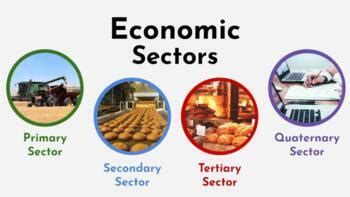Introduction

In today’s rapidly evolving economic landscape, the quinary sector has emerged as a pivotal engine of growth and innovation. This specialized sector comprises industries focused on knowledge creation, dissemination, and application, unlocking new possibilities and shaping the future of society.
Definition and Significance of the Quinary Sector
The quinary sector encompasses a wide range of industries that leverage knowledge and information as their primary inputs and outputs. These include:
- Research and Development: Universities, research institutes, and laboratories engaged in fundamental and applied research.
- Higher Education: Institutions providing advanced education and training in various fields, including science, technology, and the arts.
- Information Technology: Companies and organizations involved in software development, data analysis, and information management.
- Media and Communications: Industries producing and distributing information, entertainment, and communication services.
- Consulting and Business Services: Firms providing professional advice, insights, and support to businesses and organizations.
The quinary sector plays a crucial role in driving economic development by:
- Fostering innovation and technological advancements.
- Creating high-value jobs and attracting skilled workers.
- Enhancing productivity and competitiveness in all sectors.
- Driving societal progress through research and knowledge dissemination.
Global Trends in the Quinary Sector
The quinary sector is experiencing rapid growth worldwide. According to the World Economic Forum, the global knowledge economy is expected to grow by 14% by 2025, creating millions of new jobs.
- Knowledge-Based Workforce: The shift towards the quinary sector is driven by the increasing demand for highly skilled workers with advanced knowledge and expertise.
- Technological Advancements: Rapid advancements in artificial intelligence (AI), machine learning (ML), and data analytics are creating new opportunities for knowledge creation and application.
- Collaboration and Partnerships: Universities, research institutes, and businesses are increasingly forming partnerships to accelerate innovation and commercialize research findings.
Key Pain Points and Motivations in the Quinary Sector
Pain Points:
- Funding challenges: Research and development activities require significant financial investments, which can be a barrier for startups and early-stage companies.
- Skills gap: The quinary sector faces a shortage of highly skilled workers, especially in STEM (science, technology, engineering, and mathematics) fields.
- Intellectual property protection: Protecting and commercializing intellectual property is crucial for the continued growth of the quinary sector.
Motivations:
- Economic growth: The quinary sector is a major driver of economic growth, creating new industries and high-value jobs.
- Solving global challenges: Research and development in the quinary sector address pressing social and environmental issues, such as climate change and disease prevention.
- Personal fulfillment: Working in the quinary sector provides opportunities for intellectual stimulation, creativity, and societal impact.
Step-by-Step Approach to Developing a Vibrant Quinary Sector
1. Enhance Research and Development:
- Invest in universities and research institutes to expand research capacity.
- Encourage public-private partnerships to commercialize research findings.
- Provide tax incentives and funding opportunities for research and development activities.
2. Build a Knowledge-Based Workforce:
- Reform education systems to emphasize STEM education and critical thinking skills.
- Train and re-skill workers to meet the demands of the quinary sector.
- Attract and retain skilled workers through immigration and visa programs.
3. Foster Collaboration and Partnerships:
- Create platforms for universities, businesses, and government agencies to collaborate on innovation and knowledge sharing.
- Encourage interdisciplinary research to solve complex problems.
- Promote industry-led initiatives to invest in the quinary sector.
4. Protect Intellectual Property:
- Implement strong laws and regulations to protect intellectual property rights.
- Establish technology transfer offices to facilitate the commercialization of research findings.
- Encourage international cooperation to combat intellectual property theft.
Pros and Cons of Developing a Quinary Sector
Pros:
- Economic growth and competitiveness: Creates new industries, high-value jobs, and drives productivity.
- Innovation and technological advancements: Fosters a culture of innovation and drives the development of new technologies and products.
- Societal progress: Addresses global challenges, improves healthcare, and enhances education opportunities.
Cons:
- Funding challenges: Requires significant financial investments in research and development.
- Skills gap: May face difficulties finding qualified workers, especially in STEM fields.
- Income inequality: May exacerbate existing income disparities if not managed properly.
Applications of the Quinary Sector
The applications of the quinary sector are vast, with potential breakthroughs in various fields:
Healthcare:
- Development of personalized medicine and precision treatments based on genetic information.
- Use of AI and machine learning for early disease detection and diagnosis.
- Telemedicine and remote healthcare services to improve accessibility.
Education:
- Development of online learning platforms and adaptive learning systems.
- Use of AI to personalize learning experiences and improve student outcomes.
- Creation of virtual and augmented reality environments for immersive learning experiences.
Environment:
- Development of sustainable energy solutions and carbon capture technologies.
- Use of AI and satellite imagery to monitor environmental changes and predict natural disasters.
- Research on climate change mitigation and adaptation strategies.
Transportation:
- Development of autonomous vehicles, smart traffic management systems, and electric vehicle technologies.
- Use of AI and blockchain technology to optimize logistics and reduce carbon emissions.
- Design of infrastructure that supports new mobility options.
Conclusion
The quinary sector holds immense potential to drive economic growth, innovation, and societal progress. By addressing the challenges and seizing the opportunities, governments, businesses, and individuals can harness the power of knowledge and create a vibrant future for all. As the world becomes increasingly interconnected and knowledge-driven, the quinary sector will play a pivotal role in shaping the future of humanity.
